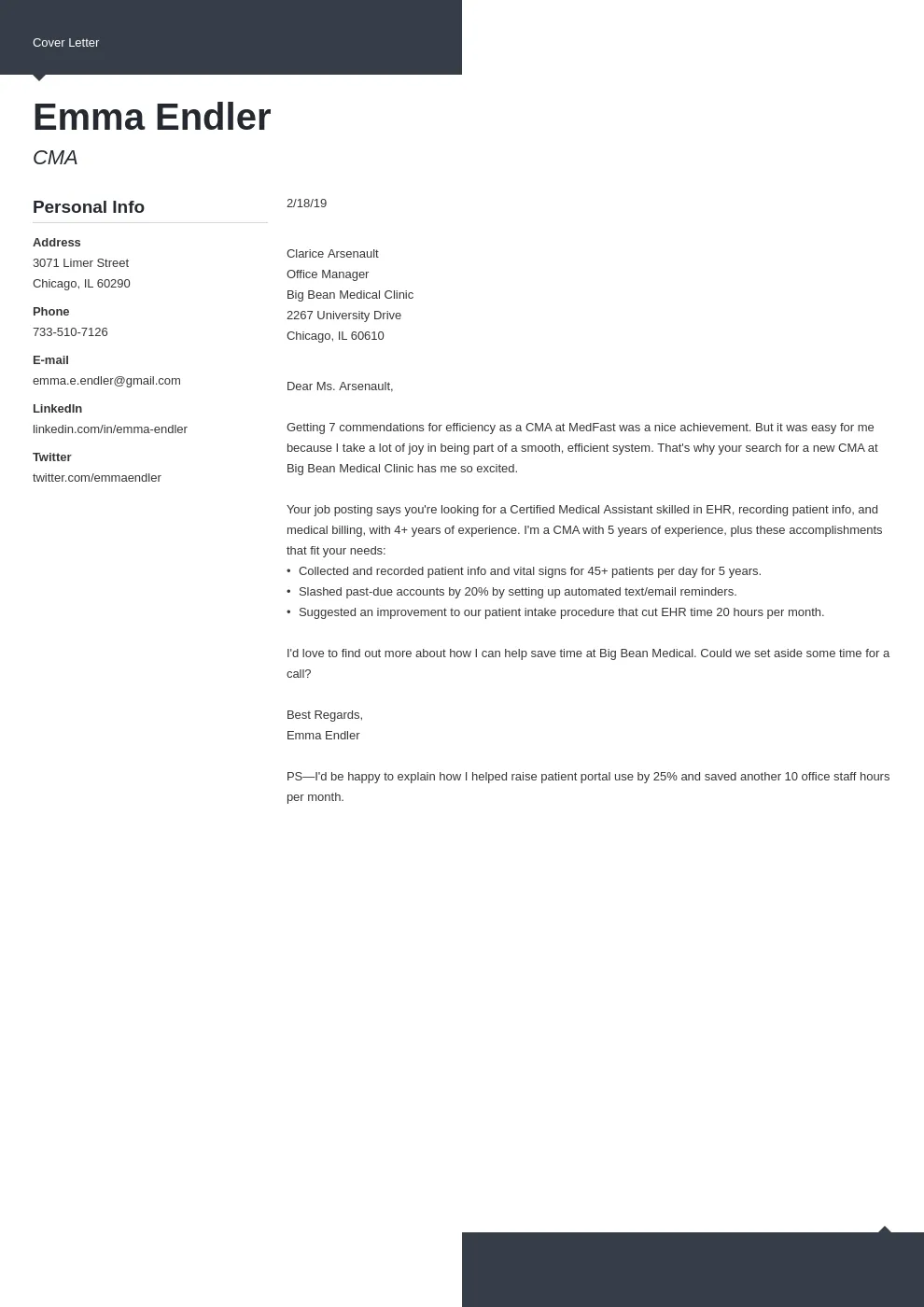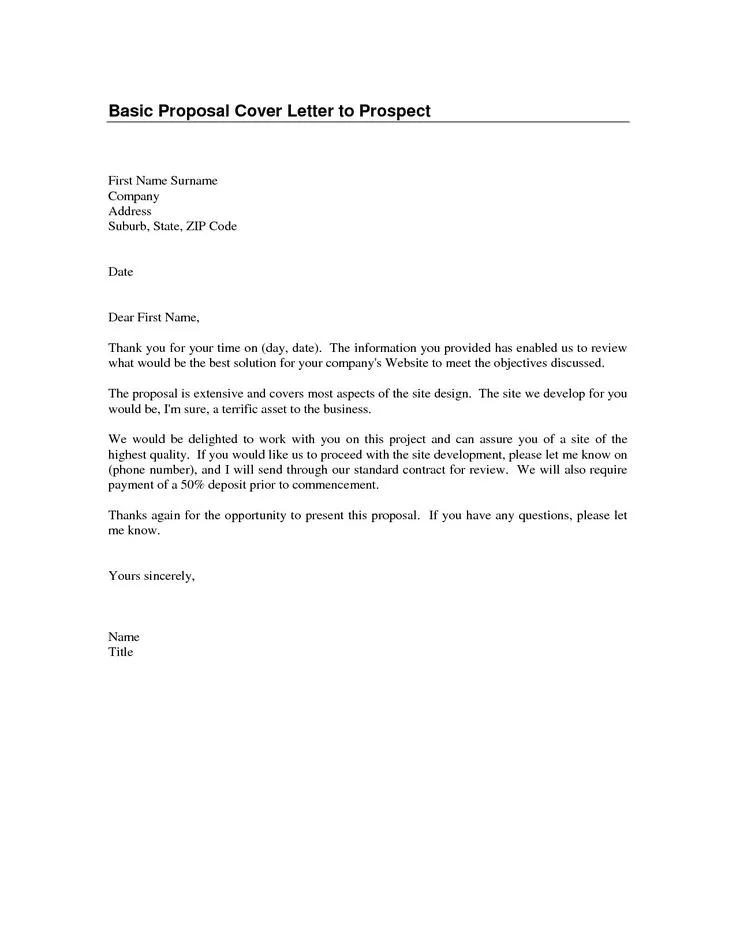Cover Letter Examples: 5 Quick & Easy Examples
Navigating the job market can be daunting, but a well-crafted cover letter can significantly boost your chances of landing an interview. A cover letter serves as your first introduction to a potential employer, providing a glimpse into your personality, skills, and enthusiasm. This article offers five distinct cover letter examples tailored to different situations, ensuring you can create a compelling narrative that captures the attention of hiring managers. From entry-level positions to seasoned professionals, these examples are designed to be concise, impactful, and easy to adapt to your specific needs. They will guide you through the process of presenting your best self, making your application stand out from the competition. The key is to make a positive first impression and demonstrate your suitability for the role. These examples are designed to equip you with the tools you need to craft effective cover letters that get results.
Why Cover Letters Still Matter
In an era dominated by online applications and automated resume screening, the importance of a cover letter is sometimes questioned. However, a cover letter remains a critical component of any job application. It provides an opportunity to showcase your personality, communication skills, and genuine interest in the position and the company. Resumes are often factual summaries, whereas cover letters allow you to weave a narrative that connects your skills and experience to the job requirements. A well-written cover letter demonstrates your attention to detail, your understanding of the role, and your ability to communicate effectively. It’s a chance to explain why you’re the ideal candidate, addressing any gaps in your resume and highlighting your unique strengths. Moreover, it shows that you’ve taken the time to tailor your application to the specific job, which indicates a high level of interest and professionalism. In short, a compelling cover letter can significantly increase your chances of moving forward in the hiring process.
Cover Letter Essentials

Crafting an effective cover letter involves adhering to certain key elements. First, address the hiring manager by name whenever possible. This shows that you’ve done your research and are genuinely interested in the role. Begin with a strong opening that captures attention and clearly states your purpose. Briefly introduce yourself and mention the position you’re applying for. The body of the letter should highlight your relevant skills and experiences, providing specific examples that demonstrate your accomplishments. Use action verbs to describe your achievements and quantify your results whenever possible. Keep your language clear, concise, and professional. Avoid jargon and clichés. Show enthusiasm for the company and the role, and explain why you’re a good fit. Finally, conclude with a call to action, expressing your interest in an interview and thanking the hiring manager for their time. Maintain a professional tone throughout the letter, and ensure it’s free of grammatical errors and typos.
Highlight Your Skills and Experience
A successful cover letter needs to effectively showcase your skills and experiences that align with the job requirements. Begin by reviewing the job description and identifying the key skills and qualifications the employer is seeking. Then, highlight your relevant experiences, using specific examples to demonstrate how you’ve utilized those skills in the past. Instead of simply listing your responsibilities, focus on your accomplishments and the positive outcomes you achieved. For example, if the job description requires strong communication skills, provide an example of how you effectively communicated with clients, colleagues, or stakeholders. This could involve leading a project, resolving a conflict, or delivering a successful presentation. Tailor your examples to fit the specific job, emphasizing the skills and experiences that are most relevant to the role. This approach helps employers understand how you can add value to their organization and makes your application more compelling.
Quantify Your Achievements
Quantifying your achievements is a powerful technique that can significantly enhance the impact of your cover letter. Instead of making vague statements about your skills and accomplishments, use numbers and data to provide concrete evidence of your successes. This helps employers understand the scope of your contributions and the value you can bring to their organization. For instance, if you improved sales, mention the percentage increase or the total revenue generated. If you streamlined a process, specify the amount of time or money saved. If you managed a project, provide details about the budget and deadlines met. By quantifying your achievements, you demonstrate your ability to achieve results and provide tangible evidence of your value. This approach adds credibility to your claims and makes your application more persuasive. It’s important to include these metrics whenever possible. Remember to always tailor the numbers to fit the job description.
Cover Letter Example for Entry-Level Positions

For entry-level positions, a cover letter should emphasize your enthusiasm, transferable skills, and willingness to learn. Since you may have limited professional experience, focus on your educational achievements, relevant coursework, internships, volunteer work, and extracurricular activities. Highlight any projects or experiences that demonstrate your skills, such as teamwork, problem-solving, or communication. Explain how your skills align with the job requirements and demonstrate your understanding of the company’s mission and values. Express your eagerness to learn and contribute to the team. Be sure to express your enthusiasm for the role and the company. If you’ve completed any internships or volunteer work, use those experiences to show the practical application of your skills. Finally, proofread your cover letter carefully, ensuring that it’s free of errors and reflects your professionalism.
Cover Letter Example for Experienced Professionals
Experienced professionals should use their cover letters to highlight their relevant experience, accomplishments, and leadership skills. Begin by summarizing your career highlights and the key accomplishments from your previous roles. Provide specific examples of how you’ve contributed to the success of previous employers, using quantifiable results whenever possible. Demonstrate your ability to handle the responsibilities and challenges associated with the position. Show your understanding of the industry, the company’s challenges, and its strategic goals. Tailor your cover letter to the specific job requirements, highlighting the skills and experiences that are most relevant to the role. Emphasize your value proposition and explain how you can contribute to the company’s success. Make sure your tone reflects your expertise and professionalism. Proofread the cover letter and ensure it is free from any errors before submitting your application.
Tailoring Your Cover Letter to the Job
Tailoring your cover letter to each job application is essential for making a strong impression. Do not send a generic cover letter to multiple employers. Start by carefully reviewing the job description, identifying the key skills and qualifications the employer is seeking. Research the company and its values, and then customize your cover letter to address the specific requirements of the position and demonstrate your understanding of the company’s mission and values. Highlight the experiences and skills that are most relevant to the role, and provide examples of how you’ve applied those skills in the past. Use keywords from the job description throughout your cover letter, but do so naturally. Show that you’ve taken the time to understand the job and are genuinely interested in the position. The more tailored your letter is, the more likely it is to resonate with the hiring manager.
Proofreading and Formatting Tips

Proofreading and formatting are crucial steps in creating a professional cover letter. Before submitting your cover letter, carefully proofread it for any grammatical errors, typos, or inconsistencies. Check the spelling of names, titles, and company names. It’s beneficial to have someone else review your letter as well to catch any errors you might have missed. Use a clear, easy-to-read font, such as Arial or Times New Roman, and maintain consistent formatting throughout the document. Ensure that your letter is well-organized, with clear paragraphs and appropriate spacing. Keep the tone professional and ensure that the letter is well-structured and easy to read. Avoid using overly complex language or jargon, and make sure your writing is clear and concise. A well-formatted and error-free cover letter demonstrates your attention to detail and commitment to professionalism.
Follow-Up After Submitting Your Cover Letter
After submitting your cover letter and resume, it’s appropriate to follow up with the hiring manager or recruiter. Send a brief email a week or two after the application deadline, expressing your continued interest in the position and inquiring about the status of your application. In your follow-up email, reiterate your key qualifications and thank the hiring manager for their time and consideration. Keep the email concise and professional, and avoid being overly persistent. If you haven’t heard back after a reasonable amount of time, you can send a second follow-up email. When contacting the hiring manager, make sure your email is professional, polite, and demonstrates your continued enthusiasm for the role. This shows your genuine interest and helps keep your application fresh in the hiring manager’s mind.
